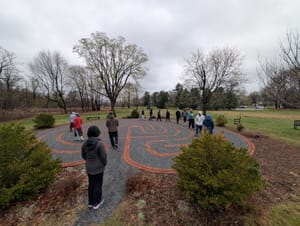At Wired, we’ve been experimenting with what we loosely call “open source journalism” in a variety of ways. What we’re learning is that there’s a fairly natural flow from quick blog posts to more fully-cooked news stories, and it works something like this.
A reporter finds out about a breaking news story, and puts a quick blog post up about it. If it’s important enough, we’ll feature that blog post on the home page of Wired.com right away. In the meantime, the reporter will continue working on the story: Calling sources, checking facts, looking for additional details, and thinking through the implications. As she discovers new information, she’ll post it to the blog, either as followup posts or as updates to the original item.
Eventually, for the bigger stories, we accumulate a series of blog posts with a fair amount of original reporting in them. This can happen over the course of a morning, a day, or even a couple of weeks. At the same time, we start getting comments on the posts, and occasionally those comments have additional information that leads us in new directions. (We do read, and sometimes respond to, all our comments.)
At this point, we can write a full-blown news story, incorporating much of the reporting and even the copy from the blog posts, while adding context, analysis, and a more standard news story structure.
The result is that readers can read any of Wired’s 10 active news blogs to get up-to-the-minute, relatively unfiltered news reporting, almost as fast as we do it. Or you can follow Wired’s home page (or our Top Stories RSS feed) to get a slower, more filtered, more “cooked” news feed.
This process has worked well for us in covering some big stories, such as the Digg user revolt of May 2007, the Virginia Tech shootings in April 2007, the iPhone launch, and coverage of a variety of industry conferences. We also use it almost daily, on a host of smaller stories.
But it’s not fast enough. For some people, even the blogs are too slow. That’s why a number of us in the Wired newsroom are starting to use Twitter, Facebook, and other social software to post about news stories we’re working on, even before we’ve blogged about them.
I’m making my Twitter, Facebook, and LinkedIn pages public, and other reporters are, too. I’ve also created a Facebook group for the tech business news beat that I oversee — it’s called The Epicenter, and it’s open to anyone who is interested in news about the tech business.
It’s all very experimental, and I’m not sure yet which media are going to work best for long-term communication and collaboration on the news. But my goal is to make something explicit about my work that has actually been true for my entire career: I’m not just a source of information, I’m also a hub for information, a conduit for facilitating the flow of news and perspective.
I’ll see you online.
UPDATE: Scott Karp has an interesting article on this topic called “Can Blogs Do Journalism?” The answer, of course, is yes, and not surprisingly, blog publishers are discovering that daily news and print journalists make pretty good bloggers.


